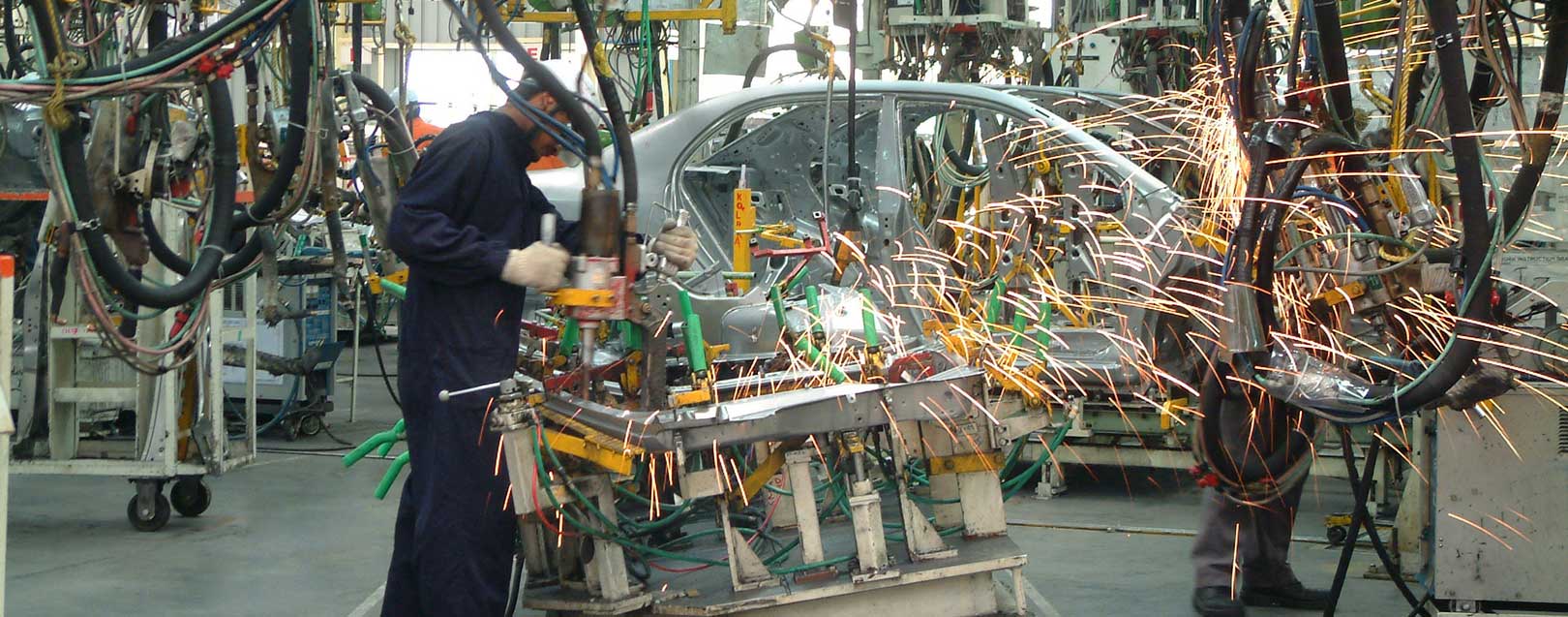
IIP growth dips to 3.1% in Apr 2017
By Abin Daya
Thanks to many exporter conferences that I have been involved in, I have had the opportunity to meet and interact with quite a few businesses recently. A very common theme that is emerging in my discussions with them is a sense of frustration and exhaustion with the sheer number of ‘disruptive changes’ that have been coming through one after the other.
Starting with the demonetisation in Nov 2016, they have had to handle the fall-out of the exporters’ caution list, and now are preparing to be compliant for GST, all of which have negatively impacted business in the short-term. Businesses do not have time to do business as they are busy with complying with the changing requirements, the cost of non-compliance being prohibitively high.
While all these changes might be good in the long term, at least in the short run, it looks as if small companies are feeling a sense of exhaustion simply due to the extended time they have spent in managing change. Unlike large corporates, MSMEs do not have the luxury of making up what they lose in one year, in the next year, and considering that this has now gone on for the better part of the year, many them are justifiably worried about their survival.
While we are seeing a lagged effect of demonetisation even now, as indicated by the lacklustre IIP data that came out recently, it remains to be seen how long it will take for GST to stabilise and for companies to get on with their ‘Business-As-Usual’.
We are not discussing the foreign trade numbers this week, and this will be covered next week. However, I want to make a small mention of the prices of India’s crude basket, which has fallen below Rs. 3,000 for the first time in 30 weeks. I am talking about weekly closing levels, and prices might have touched below this level during the week earlier.
This is significant as despite the extension of supply cuts as announced by OPEC, crude prices have failed to find support. Exempted countries within OPEC have increased supply and the US has consistently added more rigs and drilled more.
This week, we are talking about the latest IIP data, as also the inflation data, Retail and Wholesale.
Industrial production in the new FY has not got off to a great start, with IIP dropping from Mar 2017 levels. At the same time, consumer inflation has dropped to multi-year lows, partly due to base effect, and also partly due to the fall in food prices.
- IIP growth slowed in April 2017 to 3.1%, as against the 3.8% growth (revised) in Mar and 6.5% achieved a year back

- Mining sector, which had grown by 10.3% a month ago in Mar 2017, slowed down and grew at 4.2% in April; the sector had grown by 6.7% a year back
- Electricity generation, which had grown by 14.4% in Apr 2016 and by 6.2% in Mar 2017, grew at a slower pace of 5.4% in Apr 2017
- Growth in manufacturing remained lacklustre at 2.6% as against 5.5% during same month last year
- While 14 of the 23 industry groups had positive growth in April, high weightage industries such as Motor Vehicles, Non-Metallic Minerals, Food Products and Electrical Equipment contracted during the month
- Looking at the Use Based classification, Capital Goods, which had grown by a robust 9.6% in March, contracted by 1.3% in Apr 2017 while Consumer Durables extended the decline to -6% as against -3.9% in March

- The decline in Consumer durables evidences the muted consumer sentiment, possibly due to a lagged effect of demonetisation
- Consumer non-durables, however, extended the growth from 6.17% in March to 8.3% in Apr 2017
- The better than expected performance in infrastructure goods at 5.8% - as against 0.9% a month back, and 0.8% a year back – was one saving grace, as it points towards recovery in infrastructure spending
Consumer inflation falls to record lows; WPI inflation trends down
- CPI inflation in May 2017 fell to its lowest since 2012 to 2.18%, falling even below the record low of 2.99% set in Apr 2017

- Inflation on Food & Beverages fell to multi-year lows and hit -0.2% in May 2017, as against 1.3% and 7.2% in the month-ago and year-ago periods
- The high weightage of 45.86 for the F&B group helped compensate for the increase in inflation in Fuel & Light segment, which has been trending higher for some time now
- While Fuel & Light inflation dropped from 6.1% in Apr 2017 to 5.5% in May, it was still significantly higher than the 2.9% a year ago
- Inflation in the other major product group – Miscellaneous, with a weightage of 28.32 – also dropped from 4.25% in Apr 2017 to 3.81% in May
- Even Wholesale inflation dropped to a 5 month low, driven by cheaper food prices
- WPI inflation fell to 2.17% in May 2017, compared to 3.85% it hit in April. However, this was significantly higher than the -0.9% inflation in the year-ago period

- Inflation in Fuel & Power had spiked up in the past few months, thanks to the increase in crude prices, and consequently retail fuel prices
- However, this has come down from the recent peak of 25.17% in Feb 2017 to 11.7% in May
- The biggest impact on WPI inflation has come from food prices, with the new Food Index growing at just 0.15% as against 7.05% in May 2016; this was 2.9% in Apr 2017
- Some of the items which drove food inflation down were Potato (-44.4%), Pulses (-19.7%) particularly Arhar Dal (-43.9%), Vegetables (-18.5%) and Onion (-12.9%)
- Overall inflation in Primary articles was down from 4.38% a year ago to -1.8% in May this year; this is also lower than 1.82% in April
- Inflation in Raw jute was down from 63% in May 2016 to -29.4% this year, while for Minerals, it dropped from 8% to 3.7% during the same period
- Unless there is a significant movement in global oil prices WPI inflation might trend lower for the foreseeable future

- The gap between WPI and CPI inflation had been steadily decreasing and WPI inflation moved higher than CPI inflation in Jan this year
- This was an indication of increasing input costs, which the manufacturers were unable to pass on to the end-customers
- However, with the drop in Crude prices, WPI inflation has trended down and has again moved below CPI inflation
Setting records in export of spices
- Export of spices and spice products grew at 12% in volume terms and 6% in US$ value terms during FY17, as against the previous year

- Chilli continued to be the top performer with exports of 400,250 tonnes valued at Rs.5000Cr, with second place being occupied by Cumin
- The strong volumes have helped India break earlier records in spices exports, thereby creating a mark for Indian spices in the global scenario
- Efforts of the Spices Board to promoted production of large cardamom in the N-E region was one of the reasons for such a record performance

Abin Daya the author of 'Basics of Trade: An India Perspective' is a FEMA expert, a career transaction banker, with close to 15 years of experience in corporate and transaction banking, in India.







 to success.
to success.